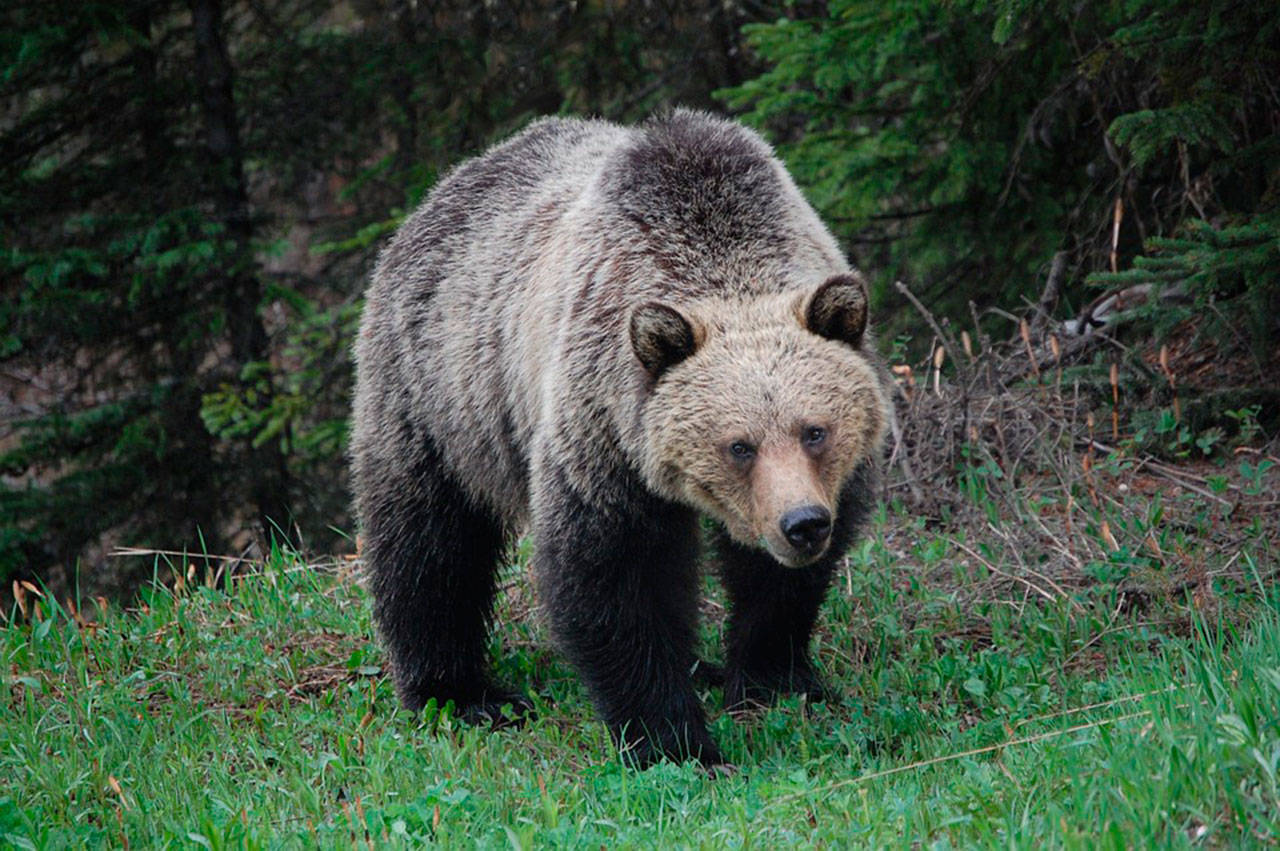Until the last 200 years, the mighty grizzly bear used to roam across Washington state, according to a new study conducted by federal wildlife agencies.
A report jointly published by the National Park Service and the U.S. Department of Fish and Wildlife studied archaeological, ethnographic and incidental evidence, which determined the bears’ historic territory. Grizzly bear populations declined across North America over the last century due to extensive hunting, trapping, predator control and habitat loss and by 1970 they only remained in around 2 percent of their former range within the lower 48 states.
In 1975 the bears were listed as federally threatened and a recovery plan was hatched. Six recovery zones were created, including one in the north Cascades, which stretches from hundreds of miles into British Columbia down to the eastern portion of King County and central Washington. Over the last decade there have been only a handful of confirmed grizzly sightings and a low density population in northeast Washington. Due to a low density, a slow reproductive rate and isolation from other populations, it is unlikely that the bears will recover on their own.
Compounding this is a Washington state law that bars state money from going towards grizzly restoration, said Penny Becker, agency lead for grizzly bear reintroduction for the Washington state Department of Fish and Wildlife.
“Our state law says that we can’t bring in bears from other places,” she said.
This means that the restoration project will need to be conducted entirely by federal wildlife agencies. As part of a restoration plan they set out to document the historical range of the grizzly bears in Washington state.
Estimates of historical grizzly distribution have been uncertain and many previous surveys hinged on data from the Hudson’s Bay Company fur records, which documented hundreds of pelts coming from the area in the 1800s. However, it was unclear where the bears were actually harvested within the region.
In the federal report, one of the areas explored were bear fossils dating from between 12,000 and 850 BP (before present). This included bones found in human hunting sites and food remains. There was also evidence of the bears holding cultural significance withing the traditions of First Nations groups. Many Salish groups that were surveyed who lived in the north Cascades and other regions of the state suggest that the bears were integrated into cultural and hunting traditions. This was mainly due to the bears being killed in defense, either of food of life, as opposed them being hunted as a standard game animal. But even this points to the bear having a wide range in the state.
The report said evidence confirms the prehistoric grizzly bears roamed in lowland regions surrounding the north Cascades. More modern observations also show that the bears that currently exist, largely easy of the mountain’s crests, prefer to live in open habitat or among white-bark pine trees, though it is not know what attracts them to the clumps of trees.
But around 200 years ago, the bear population started declining. The report said that of all the pressures faced by the bears, human population growth and density is likely the most influential factor. This stems again from the bears’ low reproductive rate and human development like cities and roads that isolated and broke up suitable grizzly habitat from other areas.
The 2017 Draft Grizzly Bear Restoration Plan also drafted by the federal government lays out three ways to bring the bears back to the state, including a no-action alternative that would have little effect. All of the plans seek to restore a 200-bear population to the zone in British Columbia and Washington state by releasing varying amounts at various times. The most dramatic would capture bears and release nearly 170 of them around the same time with a goal of full restoration within 25 years. The other two would release smaller amounts of bears with a timeline allowing up to 100 years for a full 200-bear restoration.
While Becker said the state cannot directly introduce bears to the state, they will help monitor and manage them.
“Once bears are in Washington state, they’re a Washington bear,” she said.


